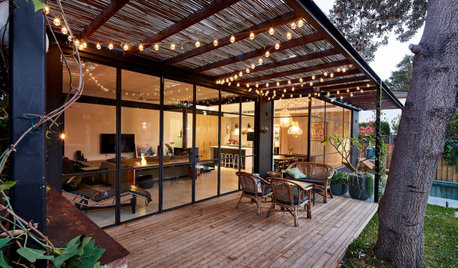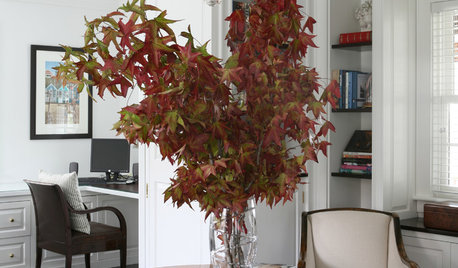temperatures at which leaves freeze of different trees
hairmetal4ever
9 years ago
Related Stories

GREEN BUILDINGInsulation Basics: Designing for Temperature Extremes in Any Season
Stay comfy during unpredictable weather — and prevent unexpected bills — by efficiently insulating and shading your home
Full Story
GREEN BUILDINGThe Big Freeze: Inventors Break New Ground to Keep Things Cool
Old-fashioned fridges can be energy guzzlers, but there are more eco-friendly ways of keeping food fresh, as these global innovations show
Full Story
LANDSCAPE DESIGNGarden Overhaul: Which Plants Should Stay, Which Should Go?
Learning how to inventory your plants is the first step in dealing with an overgrown landscape
Full Story
FALL GARDENING5 Ways to Put Fall Leaves to Work in Your Garden
Improve your soil and yard the organic way with a valuable garden booster that grows on trees
Full Story
GARDENING GUIDESWhat's Wrong With My Plant? Leaves Often Hold the Clues
Learn how to identify common plant ailments by reading their leaves
Full Story
LANDSCAPE DESIGNWhich Pergola Is Right for You?
A covered pergola can increase the time you spend in your outdoor living space. Which covering should you choose?
Full Story
LAUNDRY ROOMSRoom of the Day: The Laundry Room No One Wants to Leave
The Hardworking Home: Ocean views, vaulted ceilings and extensive counter and storage space make this hub a joy to work in
Full Story
DECORATING GUIDES9 Easy Ways to Decorate With Autumn Leaves
Give your home a burst of color that can be used Halloween through Thanksgiving
Full Story
HOUSEPLANTSGet a Dash of the Rain Forest With Madagascar Dragon Tree
This living decoration reaches up to 15 feet, has minimal needs and adapts to different light levels — just steer clear of fluoride
Full Story
FALL GARDENING11 Trees for Brilliant Fall Color
Give your landscape the quintessential look of autumn with the red, orange and yellow leaves of these standouts
Full Story








whaas_5a
ginkgonut
Related Professionals
Wrentham Landscape Architects & Landscape Designers · Ballwin Landscape Architects & Landscape Designers · Lemay Landscape Contractors · Mahwah Landscape Contractors · Pleasant Prairie Landscape Contractors · Riverview Landscape Contractors · Tavares Landscape Contractors · Vineyard Landscape Contractors · Vadnais Heights Landscape Contractors · Columbus Siding & Exteriors · Oakville Siding & Exteriors · Atlantic City Decks, Patios & Outdoor Enclosures · Dracut Decks, Patios & Outdoor Enclosures · Wheaton Decks, Patios & Outdoor Enclosures · Highland Decks, Patios & Outdoor Enclosuresdavidrt28 (zone 7)
Toronado3800 Zone 6 St Louis
User
scotjute Z8
whaas_5a
davidrt28 (zone 7)
hairmetal4everOriginal Author
bengz6westmd
hairmetal4everOriginal Author
bengz6westmd
hairmetal4everOriginal Author